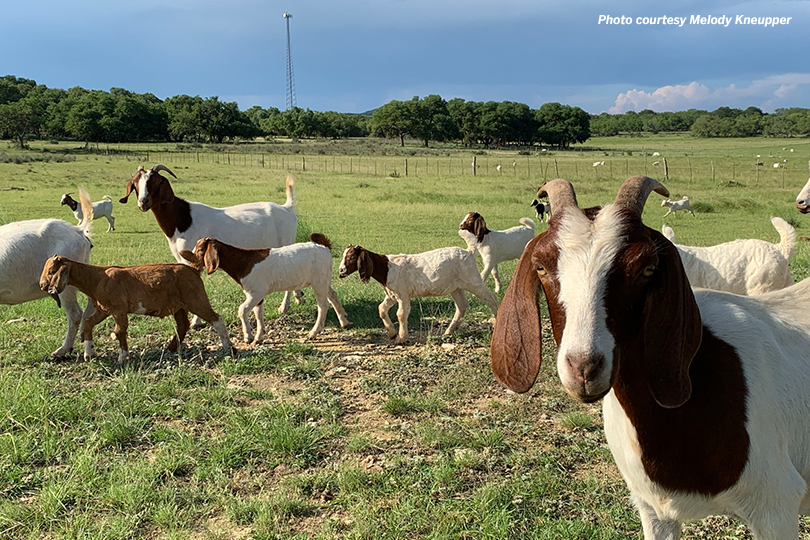By Jennifer Whitlock
Field Editor
Many Hill Country ranchers like Cody Kneupper are welcoming the recent rains.
Just north of San Antonio in Kendall County, where Kneupper’s family has raised cattle, sheep and goats for more than 100 years, conditions were dry and only getting drier until April.
But rain has restored the pastures to green and filled the stock tanks, leaving Kneupper feeling thankful.
“We were really dry, and all the pastures were short on forage. Then the rain came just in time,” he said. “Now everything the livestock can eat is fresh, green. Our ewes, lambs and goat kids are all doing really good. Our Sudan grass is growing well, so we’re pretty happy.”
In the Hill Country, the rainfall was mostly gentle and interspersed with plenty of sunshine, giving the ground time to soak up the moisture and dry out slightly before more rains came. While he had a few water gaps that needed repairs, they’ve been minor jobs.
“We’ve had plenty of moisture and days with full sun, so the forage is in really good shape right now. Another thing is we’ve caught enough tank water, so we’re not relying on wells, which is always a good position to be in,” he said. “It’s just been a really mild, wet spring and early summer. We’re expecting rain in the forecast for the next 10 days, so it doesn’t appear to be over just yet.”
When there’s excessive rainfall, a sheep or goat rancher’s biggest problem is internal parasites, according to Kneupper.
Stomach worms and internal parasites stay dormant in dry conditions, keeping thresholds below treatment levels. But warm, wet weather is optimal for populations to explode.
The eggs, which are released into pasture via the animals’ manure, hatch into larvae, which then move from manure to nearby plants and are ingested by other animals that spread the parasites even further.
“We haven’t had to treat any of our flocks for stomach worms yet, but I would imagine in the next couple of weeks we may,” Kneupper, a Kendall County Farm Bureau member, said. “We have to treat each one with an oral drench, so it can get pretty labor-intensive. We have good pens and chutes to make it a little easier, though.”
If the rain had come any earlier in the year, things might be different. Too much moisture while sheep and Angora goats are unshorn can lead to skin problems and bacterial infections.
But the Kneuppers sheared their livestock in March and April, and the weather remained mild and dry while they regained some of their coats.
“Angora goats can’t handle cold rain without any hair on them, but they had some grown in, and it warmed up before we started getting so much rain. So, they’ve been fine,” he said. “If they hadn’t been shorn when the rains came, parasites in fleece and hair could be a problem, but we haven’t had any trouble with external parasites. We put treatments on them during shearing to keep external stuff at bay, and it’s worked out well.”
Overall, his hay fields and livestock in the Hill Country are faring well.
“Now, we just need some more sunshine, so we can get in the fields and get started on cutting hay, but we’re not too concerned,” he said. “If we get an inch a day of rain, that’s good, but seven inches in one day can cause a lot of problems and make for a lot of extra work. So, we’ve been really pleased with how the weather has treated us here.”
Click here to read how the heavy rainfall is affecting North Texas agriculture.

